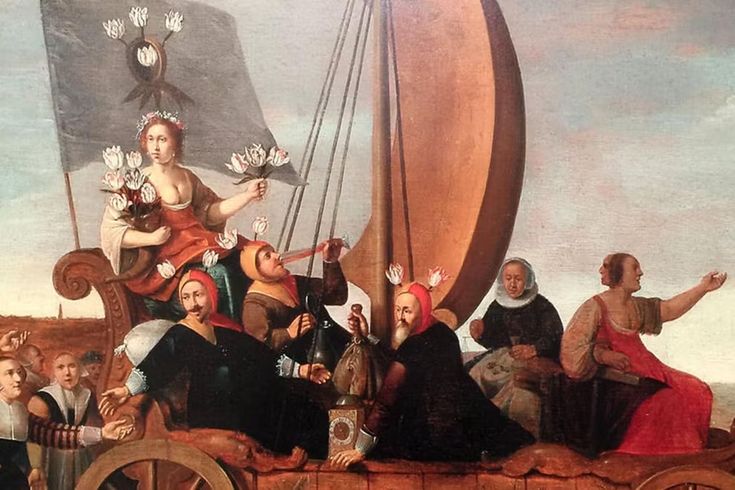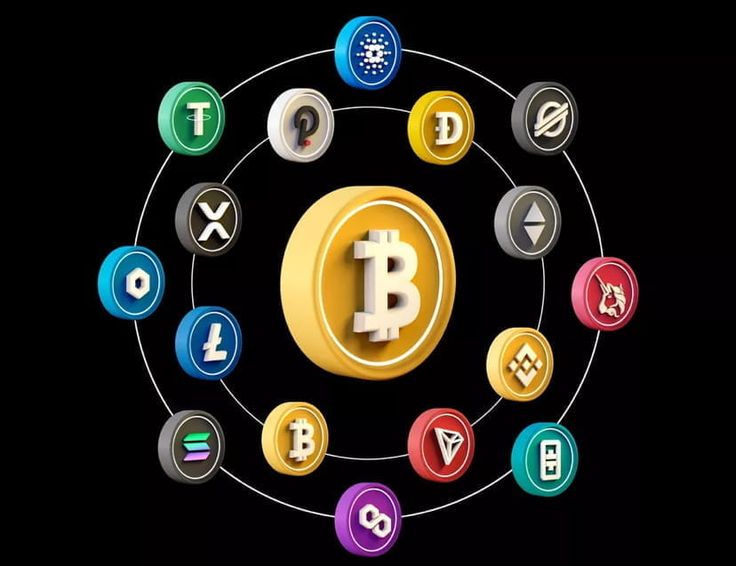Imagine buying a single flower for the same price as a house.
Sounds unbelievable, right? Well, it happened. In 1637, that was exactly what people did.
A tulip. Yes, the kind you can crush under your shoe was worth a mansion. Now, about 400 years later, people are paying millions for pixelated monkeys that are wearing sunglasses.
“From tulip mania in the 17th century to Bitcoin and NFTs today, we continue to fall for the same glittering promises.“
Almost the same story. People were not buying tulips to plant them; they were buying them to sell. They were flipping the flowers like real estate.
We like to believe that we are smarter than people of the past because we have access to technology, instant information, social media, and amusing memes. But when it comes to chasing money, we are as reckless as ever. From tulip mania in the 17th century to Bitcoin and NFTs today, we continue to fall for the same glittering promises.
Why? Because bubbles are not just about money, they are about human nature. They are about greed, fear, hype, and that voice in your head, whispering, “If I don’t jump in now, I’ll miss out forever.”
What Is a Bubble Anyway?
A bubble occurs when people become overly excited about something (such as houses, tulips, or Bitcoin) and start buying it for significantly more than its actual worth.
Welcome to the world of “Crypto Kings and Tulip Addicts,” a wild history of financial manias, where hype always wins… until it doesn’t.
The Period When Flowers Were Worth More Than Gold
Once upon a time in the 1600s in the Netherlands, a country so rich from trade that it was practically swimming in cheese and windmills. Everything was going smoothly and happily until the tulips arrived.

These bright, exotic flowers, imported from Turkey, were so beautiful and rare that everyone wanted them. And you know, according to the law of economics, the more people demand an item, the higher the cost.
At first, tulips were a symbol of status for the rich in the country; they were equivalent to owning a luxury sports car today. However, soon ordinary people became caught up in the frenzy.
The prices of the beautiful flowers skyrocketed. People were trading tulip bulbs for houses, land, and livestock. Some tulips, for example, the legendary Semper Augustus, were worth more than a year’s salary for a skilled worker.
“People who had spent fortunes on bulbs found themselves holding… well, just bulbs of tulips.”
However, here is the part that will shock you. Most of these traders were not buying the tulips to plant them in their gardens. No! They were buying them to flip them. For example, a trader will buy a bulb today for $ 1,000 and then sell it the following week for $ 2,000. It became one big game of financial hot potato.
Then, one day, the whole thing crashed. Buyers suddenly decided that tulips were no longer worth the exorbitant prices. Then the panic began. People who had spent fortunes on bulbs found themselves holding… well, just bulbs of tulips. Not mansions, not riches, just flowers.
The bubble burst, and it became one of the most famous financial manias in history.
Why Do We Fall for Bubbles?
Here’s the thing: it’s not like the tulips back then were any special. We humans have been repeating this “hype-then-crash” cycle for centuries. From the South Sea bubble in the 1700s, to dot-com stocks in the early 2000s, to today’s crypto and NFT craze. We already know this, so why do we continue to fall for it?
It’s quite simple. We fall for these bubbles for the following reasons:
1. FOMO – Fear of Missing Out
Have you ever been in a situation where a friend brags about buying a meme coin that doubled their money? Suddenly, you feel like you have to jump in too, before it’s “too late.” This is what they call FOMO.
FOMO is like standing at a party and hearing people laugh at a joke you do not get. All you do is just nod and laugh along.
“Tulips were regarded as ‘special flowers,’ and Crypto was going to ‘replace banks.’
2. Herd Mentality
When everyone is buying tulips, or bitcoin, or JPEGs, it feels safe to copy them. As humans, we think, “All these people cannot be wrong!” Spoiler alert: Yes, they can.
3. The “This Time Is Different” Myth
People always believe that this bubble isn’t a bubble. Tulips were regarded as “special flowers,” and Crypto was going to “replace banks.” And sure, some tech survives after a bubble burst, for instance, Amazon, but the hype always goes way beyond reality.
4. The Greater Fool Theory
This one is funny. Some people buy something expensive, thinking, “Someone else (a bigger fool) will pay me even more for it later.” But what if the line of fools runs out? They will be stuck holding an overpriced product. The tulip bulb is an example, or in our generation, a $300,000 cartoon ape.
Fast Forward to the Crypto Kings
If tulips were the “It” thing in the 1600s, then crypto and NFTs are the tulips of today.

In 2021, Bitcoin nearly hit $70,000. NFTs (non-fungible tokens; basically digital collectibles) were the rave. Celebrities and influencers were promoting “Bored Ape” NFTs for millions of dollars. A single JPEG, something you could screenshot for free, was selling for the price of a luxury house.
It was a case of tulip mania all over again.
People were not buying NFTs to keep them; they were buying them to flip them. Those who bragged about their wins online were also fueled by memes, with Elon Musk tweeting dodge coins into the stratosphere.
However, just like tulips, the craze didn’t last. The price of many crypto coins crashed, and NFTs lost their value. And just like that, the “digital gold rush” left many people broke and confused.
Tulips vs. Crypto: Same Game but New Players
If tulips were the ultimate flex in 1637, then crypto and NFTs were the modern-day version of that flex in 2021. Back then, only a rare tulip meant you had money, taste, and serious bragging rights. Today, a digital monkey in a sailor hat, a.k.a. a Bored Ape NFT, plays the same role. It is not just about what the thing is; it is about what it represents.
“Although the details might be different, a flower versus a pixelated JPEG, the story is essentially the same.”
Both the tulip and NFT/Bitcoin craze had the same feverish energy. Tulip bulbs were traded in taverns and markets, and crypto coins with NFTs were traded on flashy apps and hyped on several social media platforms.
The price of tulips significantly increased because everyone believed someone else would pay even more tomorrow, and crypto prices skyrocketed for the exact same reason.
When the excitement eventually faded, both markets crashed fast and hard. Just like how the tulip traders were left with expensive bulbs that nobody wanted, crypto investors found themselves holding digital assets that had plummeted in value.
Although the details might be different, a flower versus a pixelated JPEG, the story is essentially the same. Hype takes over, reality catches up, and then the bubble pops.
Why We Never Learn
This is the real question: Why don’t we learn? We know how this story ends. The bubble grows, people get rich, then it pops, and everyone acts shocked. Rinse and repeat! So why do we do it anyway?
The answer is simple: we are humans.
We are emotional, and we want to get rich fast. We love stories, and this is especially true for crypto because it wasn’t just coins; it was said to be the future of money. We are wired to follow the crowd. If everyone is jumping off a cliff, we might grab our parachutes and follow too.
Also, every new bubble convinces us that its time is “different” this time. The technology is new, the market is different, the old rules don’t apply, and more excuses. However, history shows us that hype often outpaces reality.
How Not to Be the Fool
Do you want to avoid being the one holding the bag when the next bubble pops? Here’s how you can do it:

- Ask “Why?” Why is this thing valuable? Is it just hype?
- Don’t chase trends. If everyone is screaming “Buy now!” it might already be too late.
- Make sure you only invest in what you can afford to lose. Never bet your rent money on a tulip or a meme coin.
- Look for real value. Some tech changes the world, even after it bursts in a bubble, but the junk does not.
The Interesting but Frustrating Truth
The truth is that bubbles are not going away.
As long as humans love shiny new things, someone will always be selling “the next best thing.” Maybe it will be AI tokens next, or space rocks, or perhaps virtual sneakers in the metaverse; we can never tell.
“Hype always wins until it doesn’t.“
As bad as they might be, there is still an upside to them. Bubbles also drive innovation. After the dot-com crash, survivors like Google and Amazon built the modern internet. Perhaps, after a few years, crypto will leave some valuable technology behind, just like tulips left beautiful gardens behind.
When the Dust Settles
From tulip addicts in 1637 to crypto kings in 2021, we are all playing the same game. We chase hype, dream of riches, and sometimes crash hard. However, the lesson learned is that hype always wins, until it doesn’t.
So, the next time someone tells you about a hyped trend you shouldn’t miss or a “can’t-miss” investment, whether it is a flower, a JPEG, or some wild new tech, just remember that people once traded their houses for tulips.
Don’t be that guy!
Have you ever fallen for a modern-day ‘tulip’ or maybe a meme coin, an NFT, or some other hype? Drop your story in the comments; we would love to hear about your wins, losses, or near-misses.
And if this article made you rethink how hype works, share it so that more people won’t end up buying their own million-dollar tulip!


